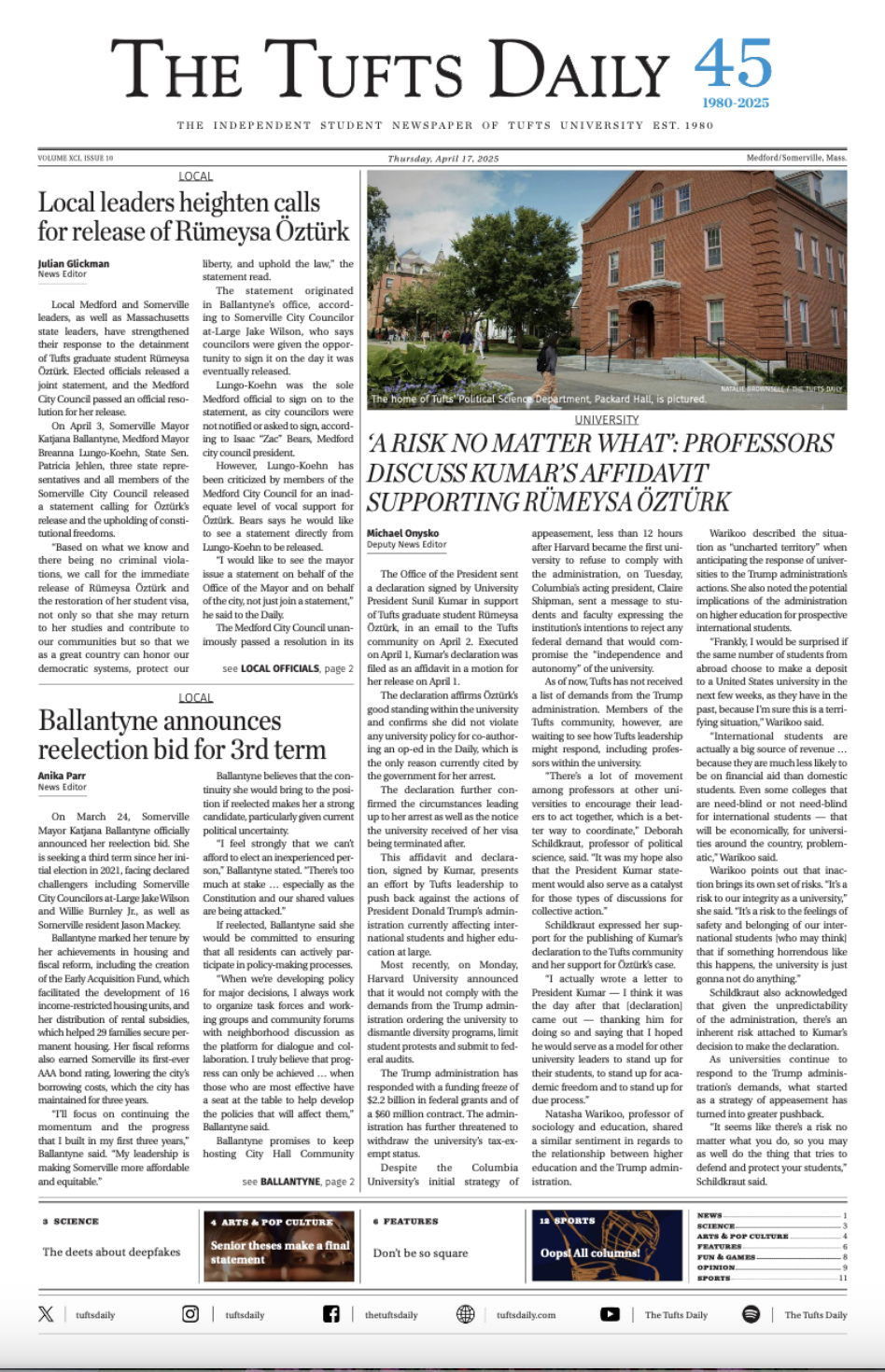God has dealt me a cruel hand: I am a biology major who yearns for the arts and humanities. Unfortunately, my course schedule has really limited the amount of arts classes I’ve been able to take in my four years at Tufts. Instead of taking classes on classical literature or contemporary plays, I’ve been burdened with biological knowledge, such as the organization of the fly’s nervous system or the way cells repair DNA damage. Fortunately, I’ve found a YouTuber who delivers content worthy of a college English class and with the humor and aesthetic taste of the contemporary world. Enter Lola Sebastian.
There is so much to love about Sebastian’s content. Her channel has evolved over time, as her first videos were released in 2019 and were more focused on literature. A few of her videos revolve around Vladimir Nabokov’s “Lolita” and the books attempting to retell its tale. As she continued to make videos, her topics began to diversify. From “Challengers” to cannibals to “Sweeney Todd,” her videos are all carefully thought out in both script and editing. Her work brings to mind esteemed YouTuber Lindsay Ellis, as both apply academic theories to modern topics in a seamless and accessible fashion. Sebastian’s videos are long, often over an hour, yet the time does not register as the viewer remains attentive to the words Sebastian says. Her videos often read more along the lines of documentaries, with crisp editing and elaborate introduction credits.
Out of Sebastian’s videos, my favorite is titled “The Absurd Horror of Marge Simpson.” I am a massive “Simpsons” fan — a fact obvious if you take a look at me and my general demeanor — and Sebastian is as well, infusing her video with a plethora of “Simpsons” clips, and more importantly, interjections from the beloved Troy McClure. The video itself focuses on both the character of Marge Simpson and the literary themes of isolation, absurdity and time loops. It’s hard to find many YouTube videos exploring the depths of the long-running animated sitcom, so when this video appeared on my recommendations page, I simply had to watch. This video is perhaps one of Sebastian’s most experimental, and I urge readers to go and watch her video before I talk about how much I love it.
You watched? Good. The video is simultaneously an absurd horror and about absurd horror. The video bounces around from tableau to tableau, beginning with the Marge interview and spiraling from there. Black and white shots, blood pouring out of Sebastian’s mouth, and yet, you understand why she’s doing it. She is attempting to emulate the horror Marge finds herself in. Sebastian masterfully convinces the audience of Marge’s dilemma of being trapped in a time loop spanning thirty-six seasons, something that the original animators have probably never thought of before. I love how many topics Sebastian addresses in this video: the rise in “trad-wives” in the wake of the pandemic, the relationship between Homer and Marge, the writing of Charlotte Perkins Gilman. Sebastian takes the writings of men that I have no familiarity with and puts them in a context that I understand.
Adding to the collegiate nature of Sebastian’s work, she makes the philosophy accessible to viewers. To get into the horror of Marge, you need to understand Friedrich Nietzsche’s idea of eternal recurrence, where time repeats itself in an infinite loop. To Marge, she will always be stuck in the framework of “The Simpsons” and the show’s lack of continuity, as each episode has its own struggle, but its resolution will be forgotten by the next episode. Marge is uniquely trapped in her house, as she is a housewife and does not have the same ability to free herself from its confines as the other members of her family. Sebastian continues to elaborate on Marge’s predicament by bringing in another philosophical concept: the absurd. It turns out that within the video, Sebastian intentionally incorporated tropes from absurdism; the disjointed editing, the nonsensical script deviations and the lack of a central thesis all work to make her video absurd. The revelation that you have been engaging in the very topic that she talks about all along is fantastic.
Sebastian’s videos are so well done that it pains me to see she only has 78,000 subscribers. Her content is consistently polished, well structured, informative and humorous, and while I have my favorites, any of her videos are worth the watch. I feel as if calling her a video essayist is somehow dismissing the caliber of the work she puts out. Her works are much more along the lines of a proper seventy-five minute lecture than a mere YouTube video.






